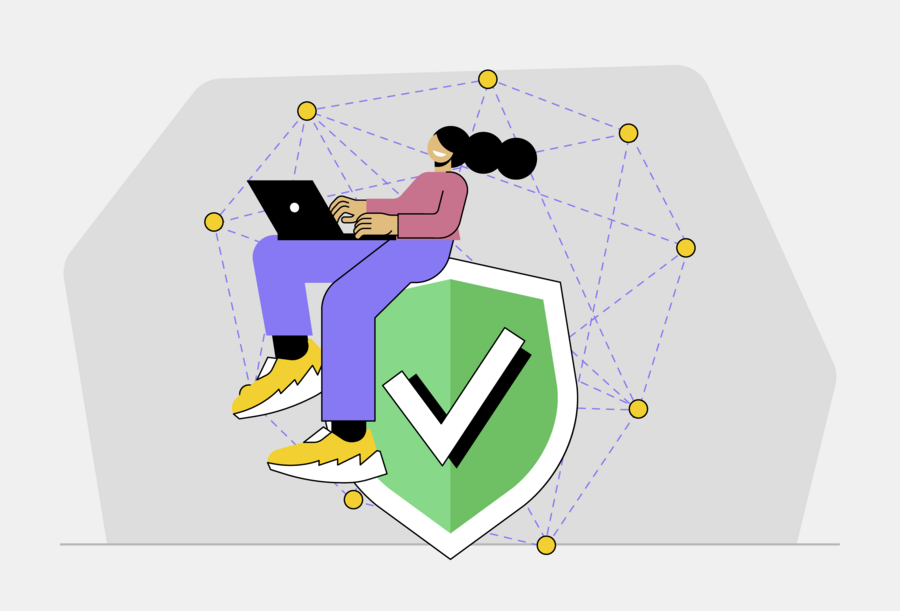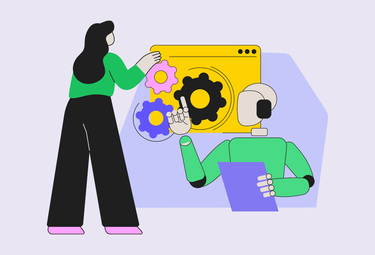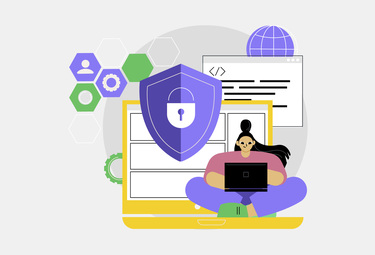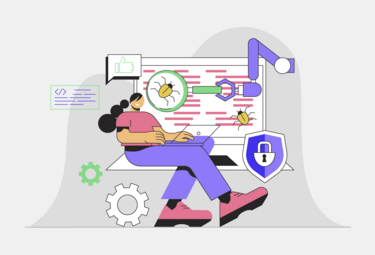Increasing digitalisation is creating new opportunities for companies, but with these opportunities also come online security risks. Our work relies heavily on digital technologies, so cyber attacks can have very serious consequences, e.g. in terms of the legal consequences that can arise if sensitive data is leaked. In addition to this, the costs that usually need to be incurred to restore servers are also of considerable importance.
Many industries are even dependent on the operation of computer systems, and therefore IT failures can even paralyse the work of an entire company. This is why it is so important to ensure adequate product security, preferably from the outset, i.e. at the initial stage of development of the software or application in question. For companies that use external security solutions, the level of security they represent and the ways in which access to the system is granted and verified should be examined.
Types of cyber security
Cyber security encompasses a company's use of various strategies to reduce the vulnerability to cyber attacks and the risk of a threat (e.g. data leakage). It can include technologies, procedures and other preventive measures to safeguard against unauthorised access to IT infrastructure.
There are several types of cyber security:
- network security - comprehensive user control and monitoring of devices connecting to the corporate network, use of firewalls and encryption technologies,
- application security - ensuring product quality through regular updates for possible vulnerabilities,
- information security - protecting sensitive data, such as customer personal data, from theft, loss or damage,
- cloud security - securing external computing or storage environments, such as dropboxes, provided by providers of such services,
- mobile and IoT security - protecting mobile devices (smartphones, tablets) and the Internet of Things (e.g. voice assistants or smart appliances) from unauthorised third-party access and takeover
- endpoint protection - securing specific devices that connect to the company network, such as company computers, to minimise the risk of a threat getting through, e.g. employee equipment
- business continuity procedures - developing contingency plans in the event of a hacking attack, covering the next steps to be taken in a crisis situation in order to restore critical systems and recover essential data.
The importance of cyber security
Dependence on digital tools exposes many businesses to serious cyber threats. Hacking attacks continue to evolve - becoming more sophisticated and more difficult to control. Cyber security of products is extremely important primarily due to three aspects:
- Privacy protection - applications, websites or IoT devices, store and process large amounts of personal data. Lack of security features can lead to their unauthorised disclosure or even theft and unauthorised use, putting users' privacy at risk.
- Protection from hackers - computer systems are very often subject to various types of malicious attacks and therefore require adequate security through software to minimise the risk of such attacks.
- Financial security - digital products that enable online payments must be particularly protected, as the execution of individual banking transactions carried out within the application depends on their security.
As a result of a hacking attack, organisations can lose sensitive data, suffer severe losses and even lose their good reputation and customer trust for good. What's more, hacks usually paralyse the functioning of part or even all of a company until the effects are repaired.
Types of hacking attacks
Among the most common cyber attacks are:
- malware - malicious software designed to secretly access a device and steal information,
- phishing - the phishing of confidential data, such as credit card numbers, through fake emails impersonating widely recognised companies or institutions,
- denial of service (DDoS) - overloading an application serving data to users in order to prevent them from accessing and continuing to use a service (usually realised by exploiting a bug causing the server to crash),
- man-in-the-middle - interception by cyber criminals of network traffic and subsequent collection of transmitted information or redirection to another location,
- zero-day - attacking software vulnerabilities, e.g. security holes, before this is discovered and fixed by the vendor.
Security measures
Using cyber security software helps to detect most suspicious activity and stop it before it causes serious damage. There are as many monitoring systems as there are types of attack, so it makes sense to use different forms to ensure your business is protected.
- Encryption - converting files or messages into code to maintain confidentiality.
- VPNs (Virtual Private Networks) - hiding an IP address in a virtual network to prevent traffic from being tracked or intercepted, e.g. in public places.
- Authentication - verifying the identity of users before accessing applications.
- SIEM (Security Information and Event Management) - the use of systems that collect and analyse in real time any event or error information from various sources, such as firewall, DNS, router and anti-virus.
- Firewalls - the implementation on the server of a firewall that monitors and filters data coming through the internet connection. You can read more about this tool in the article: How to improve cloud security with a web application firewall (WAF).
A sense of security, whether in the real or virtual world, is vital. The resilience of systems against unwanted attacks is an absolute cornerstone of designing robust IT solutions these days. Lack of attention to adequate protection can result not only in financial or legal consequences, but also in reputational ones, so it is worth taking care of it at the initial stage of product development.





